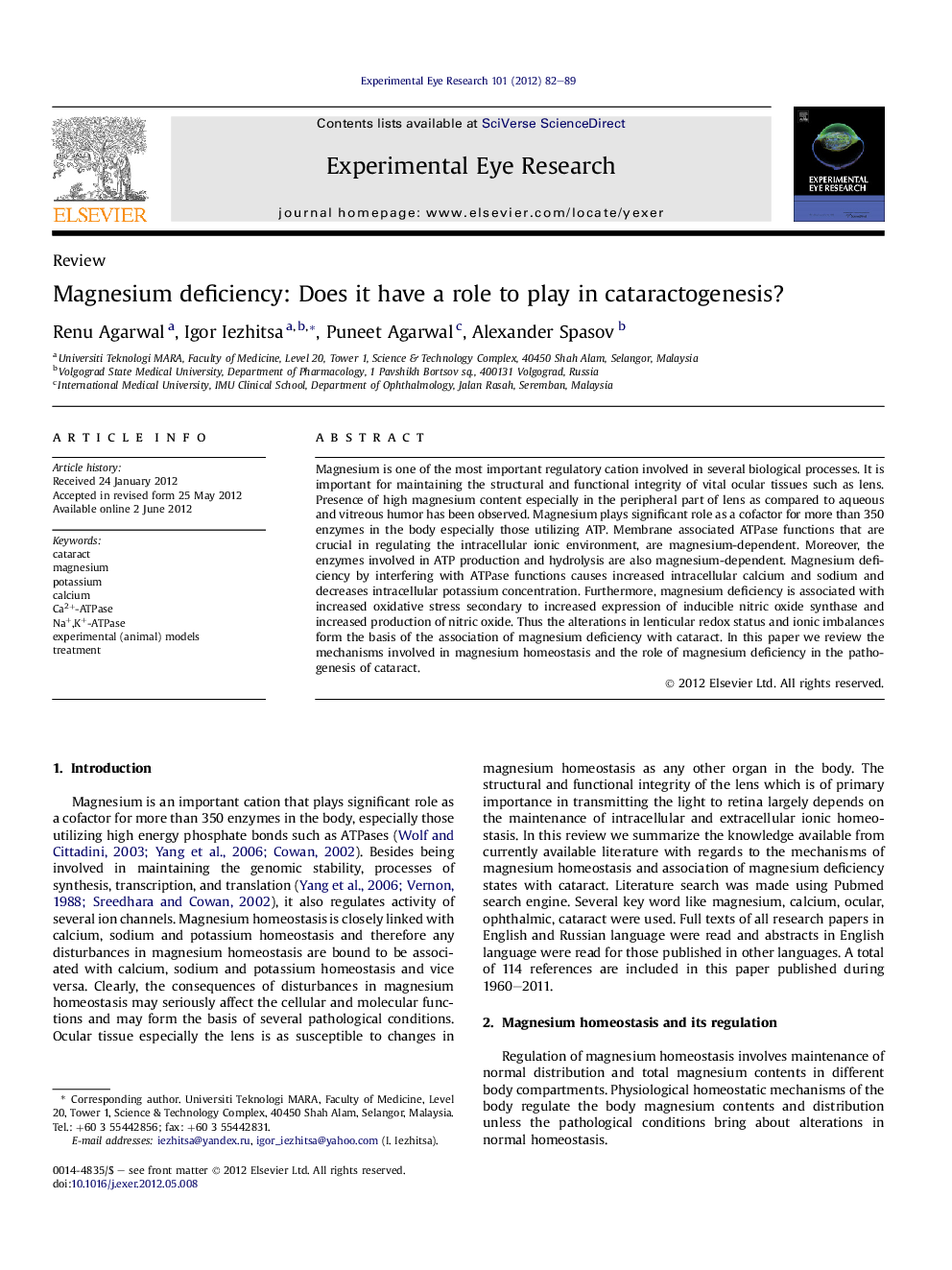| Article ID | Journal | Published Year | Pages | File Type |
|---|---|---|---|---|
| 4011335 | Experimental Eye Research | 2012 | 8 Pages |
Magnesium is one of the most important regulatory cation involved in several biological processes. It is important for maintaining the structural and functional integrity of vital ocular tissues such as lens. Presence of high magnesium content especially in the peripheral part of lens as compared to aqueous and vitreous humor has been observed. Magnesium plays significant role as a cofactor for more than 350 enzymes in the body especially those utilizing ATP. Membrane associated ATPase functions that are crucial in regulating the intracellular ionic environment, are magnesium-dependent. Moreover, the enzymes involved in ATP production and hydrolysis are also magnesium-dependent. Magnesium deficiency by interfering with ATPase functions causes increased intracellular calcium and sodium and decreases intracellular potassium concentration. Furthermore, magnesium deficiency is associated with increased oxidative stress secondary to increased expression of inducible nitric oxide synthase and increased production of nitric oxide. Thus the alterations in lenticular redox status and ionic imbalances form the basis of the association of magnesium deficiency with cataract. In this paper we review the mechanisms involved in magnesium homeostasis and the role of magnesium deficiency in the pathogenesis of cataract.
► For the first time ever, we review role of Mg deficiency in cataract. ► Mg is of critical importance in regulating functions of lens. ► Mg as cofactor for several enzymes such as ATPase and as natural Ca2+ antagonist. ► Mg deficiency as a factor in increased intracellular Ca2+ and Na+ of lenticular tissue. ► Mg deficiency as a contributing factor in increased lenticular oxidative stress.
